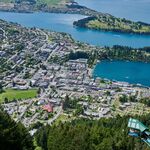Streety McCarface
Senior Member
Ridership from Kitchener has got to be at an all-time high, daily usage of the station is probably close to 1000 boardings and 1000 alighting's when it's not a student migration day. For those, see:It would be interesting to see ridership by station, and how that had changed.
Oakville GO for example appears very empty still of car commuters. The south lot is closed. The main lot maybe 25% full on a weekday. Same with the garage. The lot east of Trafalgar was closed all winter, not sure if it has reopened.
Ironically, in some US cities, regional rail ridership recovery is actually exceeding that of local service recovery (ie bus and subway). NYC has been dealing with this. https://new.mta.info/coronavirus/ridershipIt will take longer for a commuter system like GO to recover its ridership and this is similar to what has happened in nearly every other city with their commuter rail systems.
Commuter rail is very much focused on getting people from the suburban homes to downtown offices. White collar work is, by far, the biggest candidate for working from home and hence a huge number of those trips are no longer needed. As GO slowly turns into a more suburban & rapid transit system, the percentage of riders strictly going from their suburban homes to Union will decrease as a proportion of trips provided. GO's recent complete fare integration/reduction and free 905 transfer will greatly expediate this process.
In other news: GRT's ridership now exceeds that of pre pandemic ridership.




